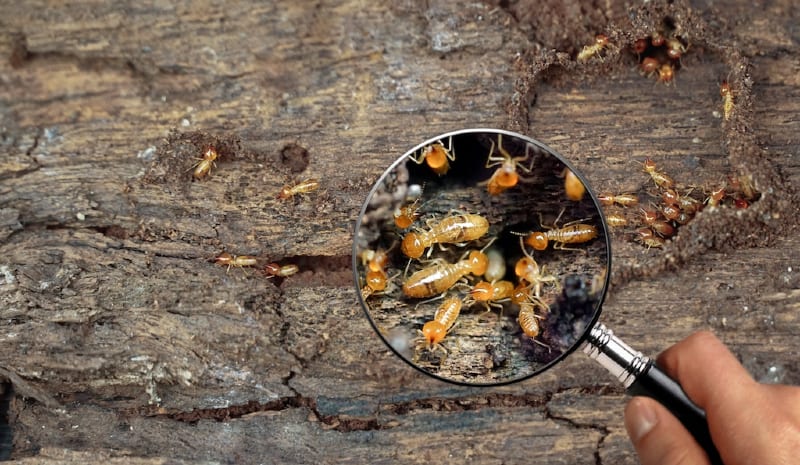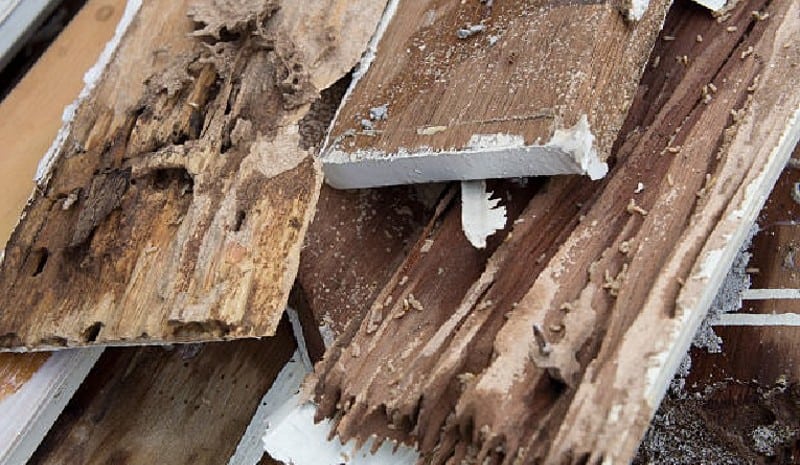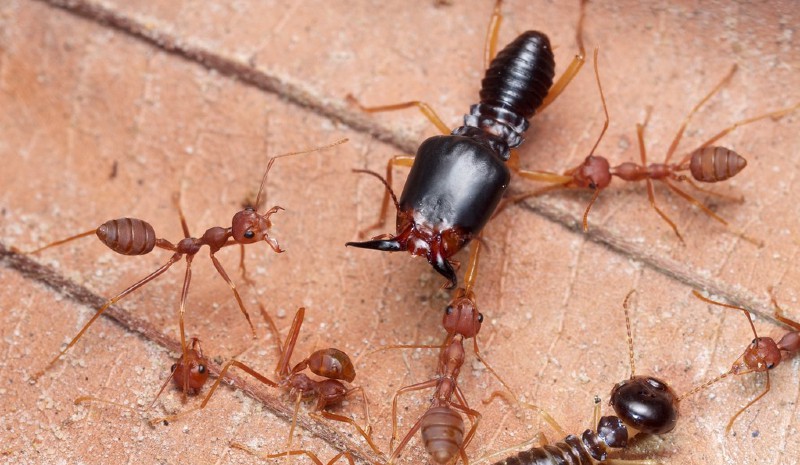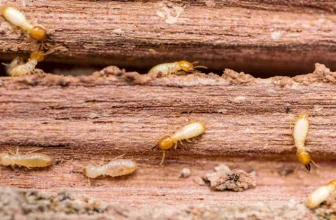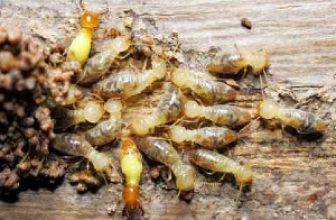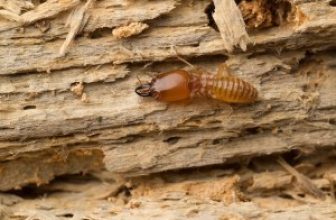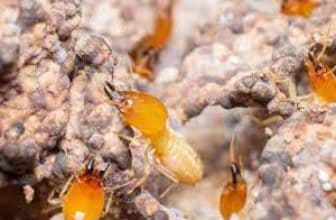Picture this: you come across a termite and start pondering about its lifespan. How long do they live? It’s not something we typically think about, but it’s fascinating to know. In this article, we’ll dive deep into the world of termites and explore their lifespan. We’ll take a detailed look at the different types of termites, factors that affect their lifespan, and tips to keep them away. So, let’s get started and discover how long termites typically live.
What Is the Average Lifespan of a Termite?
When it comes to pests, termites are some of the most destructive and dreaded. In order to better understand how to prevent and deal with infestations, it’s important to know how long they live. The termite lifespan varies based on the specific role in their colony, with worker termites having the shortest lifespan and queen termites living the longest. To get a better understanding of their lifespan, it’s important to look at each type of termite and their unique characteristics. For a full understanding of the termite life cycle, you can check out our article on the complete termite life cycle.
Worker Termites
Worker termites are the most common type of termite in a colony. Their main responsibility is to find food sources and bring it back to the colony. They have a pale, soft body and are about 3-5mm long. Worker termites are known for their ability to consume wood, which makes them a serious pest for homeowners.
The average lifespan of a worker termite is around one to two years. However, it’s important to note that they have a high mortality rate, so it’s rare for them to live for two years.
Soldier Termites
Soldier termites are an essential part of the colony’s defense system as they protect it from predators and other threats. These termites have powerful jaws and can release chemicals to deter predators. They have elongated yellowish-brown heads with strong mandibles used for defense. Compared to worker termites, soldier termites have a relatively shorter lifespan.
Soldier termites have a lifespan of up to two years. During this time, they remain in the colony, patrolling its surroundings, and protecting the queen, eggs, and larvae. They are tasked with defending the colony from threats from other insects, such as ants, which are known to prey on termites.
Queen Termites
Queen termites are the primary reproductive female in the termite colony. They are responsible for laying thousands of eggs each day, and can live up to 25 years in some species. The queen is the largest member of the colony, sometimes reaching sizes of up to 10 centimeters in length.
It is important to note that not all termite species have designated kings and queens. In some species, multiple females can produce offspring and take on the role of reproducer, while in others, the colony may rely on a single reproductive.
To learn more about the factors that contribute to the termite life cycle, see our article on Factors Contributing to the Termite Life Cycle. To learn about the different stages of a termite infestation, see our article on Termite Infestation Stages.
King Termites
The king is the reproductive partner of the queen, and his primary responsibility is to produce sperms that will fertilize the queen’s eggs. Once this task is completed, the king termites spend the rest of their lives tending to the queen and her offspring. The king termite is not as long-lived as the queen, with an average lifespan of only a few years.
What Factors Affect Termite Lifespan?
The lifespan of termites can be influenced by various factors. Understanding these factors can provide crucial insights into how to prevent and manage termite infestations successfully. Factors such as the environment, species, resources, predators, and natural disasters can all impinge on how long termites will live. In this section, we’ll examine each of these factors in more detail and explore their impact on termite colonies.
Environment
The environment plays a crucial role in the lifespan of termites. These fascinating insects thrive in warm and humid environments, which allows them to grow and reproduce rapidly. However, extreme temperatures or droughts can significantly reduce their lifespan. Let’s take a closer look at how the environment affects the different termite castes:
| Termite Caste | Optimal Environment | Impact of Extreme Conditions |
|---|---|---|
| Worker Termites | Warm and humid environments with access to wood and moisture | Extreme temperatures or droughts can slow down their growth and reduce their lifespan. |
| Soldier Termites | Similar to worker termites | Extreme temperatures or droughts can weaken their immune system and make them more susceptible to predators. |
| Queen Termites | Dark, warm, and humid environments with access to food and a steady supply of workers | Changes in temperature or humidity can affect her ability to reproduce and lay eggs. |
| King Termites | Same as the queen. | Similar effects as the queen. |
It’s worth noting that different termite species have different environmental preferences, and some are more adaptable to extreme conditions than others. For example, some species of termites can survive in dry environments or even in the desert. However, even these hardy species have their limits, and prolonged exposure to extreme conditions can still have a negative impact on their lifespan.
Understanding how the environment affects termites can help you create a prevention plan to keep them away from your home or property. Ensuring that your home is properly ventilated, dealing with any leaks or moisture problems, and keeping wood and debris away from the foundation of your home can all help reduce the chances of a termite infestation.
Species
Termites come in various species, and each has a different lifespan. Some species can live for up to 20 years, while others can live for a few months to a few years. The species of the termite is an important factor in determining lifespan.
Southern Subterranean Termites are the most common type of termite found in the southern United States. They live in humid environments and require a steady supply of moisture to survive. These termites usually live for about 5-7 years and are responsible for a significant amount of damage to homes.
Eastern Subterranean Termites are another type of subterranean termite that is commonly found in the eastern United States. They are smaller than the Southern Subterranean Termite, but they can still cause significant damage to homes. These termites usually live for about 3-5 years.
Dampwood Termites are larger than subterranean termites, and they require a lot of moisture to survive. They are usually found in areas with high humidity levels and are known for their ability to cause significant damage to wood structures. Dampwood termites can live for up to 5 years.
Formosan Termites are the most destructive of all termite species. They are known to cause significant damage to structures and can live for up to 10 years. These termites are commonly found in warm, humid areas, and they require a significant amount of water to survive.
In addition to these species, there are also drywood termites, which usually live for around 2-5 years. The lifespan of the termite species is important to consider when choosing termite prevention and treatment methods.
Resources
The resources available to termites play a significant role in their lifespan. Termites feed on cellulose, a material found in plants and wood, which they break down using enzymes produced by bacteria in their gut. The quality and availability of cellulose-rich resources can determine the health and survivability of a termite colony.
Quality of Resources: High-quality resources like fresh wood can provide termites with more nutrition, leading to improved overall health and lifespan. In contrast, low-quality resources like decayed wood or drywall may not provide sufficient nutrients, leading to decreased lifespan and overall colony health.
Availability of Resources: Availability of resources is also a critical factor in the lifespan of termites. A lack of food can lead to higher mortality rates as termites can’t find enough cellulose to consume. The queen termite may also stop producing eggs due to a lack of food, impacting the colony’s growth and longevity.
To illustrate the importance of resources to termites, we can compare the lifespans of termites in natural settings and laboratory conditions. In natural settings, where food sources are abundant and varied, termites can live for several years. However, in laboratory conditions where food sources are limited, termite lifespans may be significantly shorter.
It is essential to manage resources around your property to prevent termites from making their home there. Regular inspections and treatments can help ensure that the supply of resources is minimized, making it less attractive for termites to infest your property.
Predators and Natural Disasters
Termite colonies are usually safe from predators, as these pests have developed their own defense mechanisms, such as soldier termites with powerful jaws and protective secretions. However, there are still some predators that can cause damage and reduce the lifespan of a termite.
Ants: Ants are one of the most common predators of termites. They can invade termite colonies and consume the workers and soldiers. Some species of ants also attack the reproductive termites, which can have a significant impact on the long-term survival of the colony.
Birds: Some bird species, such as woodpeckers, feed on termites by drilling into the wood and extracting them. This can cause structural damage to the infested wood and reduce the lifespan of the colony.
Bats: In some areas of the world, bats are known to feed on termites. They use echolocation to locate the nests and then swoop in to capture the pest. While bats may not have a significant impact on the lifespan of the colony, their presence can still be a concern.
Natural Disasters: Natural disasters can also affect termite colonies, either by directly destroying the nest or by disrupting the environment. Floods and hurricanes can cause structural damage to buildings and homes, which can disrupt termite colonies and reduce their lifespan.
It’s important to note that while predators and natural disasters can have an impact on termite colonies, the biggest threat to their lifespan is often human intervention. With the destruction of natural habitats and the increase in urban development, termites are often attracted to the structures that we build, which can lead to infestations and long-term damage.
Conclusion
In conclusion, a termite’s lifespan can vary depending on multiple factors such as environment, species, resources, predators, and natural disasters. Worker termites typically live for one to two years, while soldier termites can live for up to two years, and queen termites can live up to 25 years. King termites have the shortest lifespan as they only live for a few years.
To keep termites away, preventative measures such as reducing moisture, removing wood debris, and sealing entry points are crucial. Regular inspections and professional treatment can also prevent termite infestations. Remember that termite infestations can cause serious damage to your home, which can lead to costly repairs. So, it’s essential to take proactive measures to protect your home from termites.
If you suspect a termite infestation in your home, it’s best to seek professional help immediately. With the right treatment, you can eliminate termites and protect your home from further damage. Keep in mind that prevention is key to avoid termite infestations, so take action today to safeguard your home.
Frequently Asked Questions
1. How long do termites typically live?
The average lifespan of a termite varies depending on its role in the colony. Worker and soldier termites typically live for 1-2 years, while queen and king termites can live for decades.
2. How do termites affect homes?
Termites can cause significant damage to homes by feeding on wood and other cellulose-based materials, potentially leading to structural issues if left untreated.
3. What are some signs of a termite infestation?
Signs of a termite infestation can include winged termites swarming around your home, mud tubes along your foundation or walls, and wood that sounds hollow when tapped.
4. Can termites be controlled without professional help?
While some homeowners may attempt DIY termite control methods, it is generally recommended to seek professional help for effective and long-lasting results.
5. How do termites impact the environment?
Termites play an important role in breaking down dead wood and other plant matter in the environment, helping to maintain nutrient cycles and soil health.
6. What types of termites are commonly found in the United States?
The most common types of termites found in the US include subterranean termites, drywood termites, and dampwood termites.
7. Can termite damage be covered by homeowner’s insurance?
Termite damage is typically not covered by standard homeowner’s insurance policies and may require additional pest control coverage.
8. How can homeowners prevent termite infestations?
Homeowners can help prevent termite infestations by minimizing moisture around the home, storing firewood away from the house, and scheduling regular professional inspections.
9. Do all types of termites have wings?
No, not all types of termites have wings. Winged termites are typically part of the reproductive caste and are responsible for establishing new colonies.
10. What is the economic impact of termite damage?
The economic impact of termite damage can be significant, with estimates reaching billions of dollars in property damage and pest control costs each year.
References
Contents
Why You Should Trust Pest Control Hacks?
We know that pests are nasty neighbors, and it can take months to eliminate them without the right approach. Our experts use their own experience to compile articles and guides that are introductory and informative. Our authors’ opinions are independent and based on the results of practical testing of pest control tools. We do not notify manufacturers of testing of their products and do not receive payment from them for posting their items. Also, our texts are never submitted to company representatives for proofreading before placement. On the site, you will find exclusively objective ratings and reviews.

